 That is, the square of the sum of two quantities is equal to the square of the first, plus twice the product of the first by the second, plus the square of the second. That is, the square of the sum of two quantities is equal to the square of the first, plus twice the product of the first by the second, plus the square of the second.  Grammar-school arithmetic - Page 551by John Henry Walsh - 1898Full view Grammar-school arithmetic - Page 551by John Henry Walsh - 1898Full view - About this book
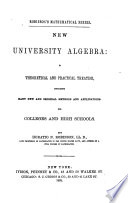 | Horatio Nelson Robinson - Algebra - 1863 - 432 pages
...operations, the results which follow: I. (a+b)'=(a+u) (a+b')=a>+2ab+bt Or, expressing the result in words, The square of the sum of two quantities is equal to the square of the first, plus twice the product of the first and second, plus the square of the second. II. (a— b)'=(a—... | |
 | Benjamin Greenleaf - 1863 - 338 pages
...following theorems give rise to formulas, useful in abridging algebraic operations. THEOREM I. 76 ( The square of the sum of two quantities is equal to the square of the first, plus twice the product of the first by the second, plus the square of the second. For, let a represent... | |
 | Paul Allen Towne - Algebra - 1865 - 314 pages
...4, and a; + 7 by a; — 4. 62. Since (x + y) (x + y) = (x + y)3 = x3 + 2xy + y3,it follows th at J%e square of the sum of two quantities is equal to the square of the jirst + twice their product + the square of the last. EXAMPLES. 1. (a + 6)3 = a2 + 2a6 + 43. 2. (2a... | |
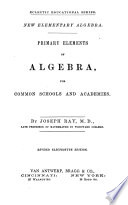 | Joseph Ray - Algebra - 1866 - 250 pages
...a2+2a6-j-62. Thus: a+6 a+6 a2+2a6-|-62 But a+6 is the sum of the quantities, a and 6. Hence, Theorem I. — The square of the sum of two quantities is equal to the square of the first, plus twice the product of the first by the second, plus the square of the second. NOTE . — Let the... | |
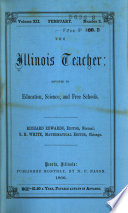 | Education - 1866 - 538 pages
...on their way." After careful thought and research, we come fully to comprehend the truth that •' the square of the sum of two quantities is equal to the square of the first, plus twice the product of the two, plus the square of the second" ; and when the tyro in Algebra jabbers... | |
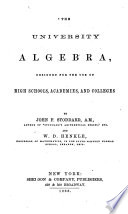 | John Fair Stoddard, William Downs Henkle - Algebra - 1866 - 546 pages
...10aV+5o«4— if by a1— Sa'x + Sox1 «. a1— CHAPTER III. THEOKEMS AND FACTORING. THEOREM I. . (1O9.) The square of the sum of two quantities is equal to the square of the fast, plus twice the product of tke first ky tlte second, plus the square of the second. DEMONSTRATION.... | |
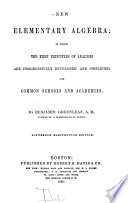 | Benjamin Greenleaf - 1866 - 336 pages
...following theorems give rise to formulas, useful in abridging algebraic operations. THEOREM I. 76, The square of the sum of two quantities is equal to the tquare of the first, plus twice the product of the first by the second, plus the square of the second.... | |
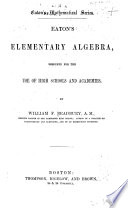 | William Frothingham Bradbury - Algebra - 1868 - 270 pages
...x" -j- 3 y and difference 5 x2 — 3y. 6. Sum 2 a — 8b and difference 10 a + 1* b. THEOREM II. 58. The square of the sum of two quantities is equal to the square of the first, plus twice the product of the two, plus the square of the second. Let a and 6 represent the two quantities... | |
 | William Frothingham Bradbury - Algebra - 1868 - 264 pages
...difference 5 x2 — 3 y. 6. Sum 2 a — 8 b and difference 10 a + 14 5. THEOREM II. 58. The square of (he sum of two quantities is equal to the square of the first, plus twice the product of the two, plus the square of the second. Let a and 6 represent the two quantities... | |
 | Robert Wallace - 1870 - 164 pages
...following theorem for finding the square of the sum of a,ny two quantities is deduced. THEOREM I. — The square of the sum of two quantities is equal to the square of the first, plus twice the product of the first by the second, plus the square of the second. EXAMPLES. 1. 2. 3.... | |
| |